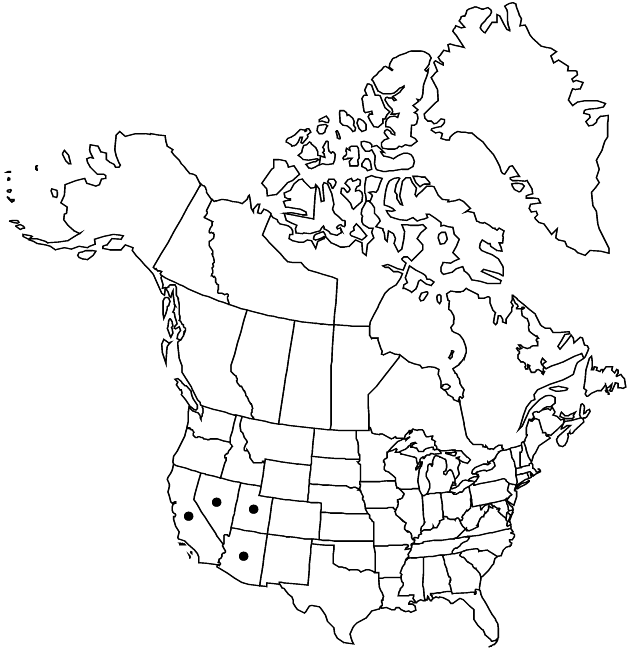Difference between revisions of "Heterotheca grandiflora"
Trans. Amer. Philos. Soc., n. s. 7: 315. 1840.
FNA>Volume Importer |
imported>Volume Importer |
||
| (6 intermediate revisions by 2 users not shown) | |||
| Line 8: | Line 8: | ||
}} | }} | ||
|common_names=Silk-grass goldenaster | |common_names=Silk-grass goldenaster | ||
| + | |special_status={{Treatment/ID/Special_status | ||
| + | |code=E | ||
| + | |label=Endemic | ||
| + | }} | ||
|basionyms= | |basionyms= | ||
|synonyms={{Treatment/ID/Synonym | |synonyms={{Treatment/ID/Synonym | ||
|name=Heterotheca floribunda | |name=Heterotheca floribunda | ||
|authority=Bentham | |authority=Bentham | ||
| + | |rank=species | ||
}} | }} | ||
|hierarchy=Asteraceae;Asteraceae tribe Astereae;Heterotheca;Heterotheca grandiflora | |hierarchy=Asteraceae;Asteraceae tribe Astereae;Heterotheca;Heterotheca grandiflora | ||
| Line 27: | Line 32: | ||
|elevation=0–100(–900) m | |elevation=0–100(–900) m | ||
|distribution=Ariz.;Calif.;Nev.;Utah;introduced in Pacific Islands (Hawaii). | |distribution=Ariz.;Calif.;Nev.;Utah;introduced in Pacific Islands (Hawaii). | ||
| − | |discussion=<p>Heterotheca grandiflora is common in California, rare and probably introduced in Arizona, Nevada, and Utah, and introduced in Hawaii. Rosette plants can bloom in the spring.</p> | + | |discussion=<p><i>Heterotheca grandiflora</i> is common in California, rare and probably introduced in Arizona, <i>Nevada</i>, and Utah, and introduced in Hawaii. Rosette plants can bloom in the spring.</p> |
|tables= | |tables= | ||
|references= | |references= | ||
| Line 36: | Line 41: | ||
-->{{#Taxon: | -->{{#Taxon: | ||
name=Heterotheca grandiflora | name=Heterotheca grandiflora | ||
| − | |||
|authority=Nuttall | |authority=Nuttall | ||
|rank=species | |rank=species | ||
| Line 50: | Line 54: | ||
|publication title=Trans. Amer. Philos. Soc., n. s. | |publication title=Trans. Amer. Philos. Soc., n. s. | ||
|publication year=1840 | |publication year=1840 | ||
| − | |special status= | + | |special status=Endemic |
| − | |source xml=https:// | + | |source xml=https://bitbucket.org/aafc-mbb/fna-data-curation/src/2e0870ddd59836b60bcf96646a41e87ea5a5943a/coarse_grained_fna_xml/V19-20-21/V20_517.xml |
|tribe=Asteraceae tribe Astereae | |tribe=Asteraceae tribe Astereae | ||
|genus=Heterotheca | |genus=Heterotheca | ||
Latest revision as of 20:03, 5 November 2020
Annuals, biennials, or short-lived perennials, 10–250 cm (atypical, spring-blooming, dwarf dune plants have short stems; perennating from proximal stem nodes in south; aromatic); taprooted. Stems 1–5+, ascending to erect (strict, 0.9–1.7 cm diam., only distal lateral branches developing in larger plants), moderately to densely hispido-strigose, more so proximally, moderately to densely stipitate-glandular, more so distally. Leaves: basal and proximal cauline petiolate (petioles 3–7 cm, bases auriculate-clasping), blades ovate or elliptic to oblong, 50–80 × 20–30 mm, margins flat or somewhat undulate, coarsely serrate to serrulate or entire, proximally long-ciliate, apices acute, faces moderately to densely long-hispido-strigose; distal sessile, blades oblong-lanceolate to lanceolate, 20–40 × 20–30 mm, reduced distally, margins often undulate, coarsely serrate. Heads 10–110+, in corymbiform arrays, becoming paniculiform with age, branches ascending, usually relatively short compared to plant height. Peduncles 10–65 mm, sparsely to densely hispido-strigose, densely stipitate-glandular; bracts 0–3, linear-lanceolate to linear, reduced distally. Involucres campanulo-hemispheric, 6–9 mm. Phyllaries in 4–6 series, linear-lanceolate, unequal, margins scarious, faces strigose, densely stipitate-glandular. Ray florets 20–40; laminae 5–8 × 1–2 mm. Disc florets 30–75; corollas 4–6 mm, lobes 0.5–0.8 mm. Cypselae dimorphic, (ray) 2–5 mm, faces glabrous or slightly strigose on angles, (disc) 4–6 mm, faces moderately to densely strigose; pappi 0 (ray) or (disc) stramineous to rusty brown, outer bristles 0.4–0.7 mm, inner 6–9 mm, longest weakly clavate. 2n = 18.
Phenology: Flowering Apr–Dec(–Jan).
Habitat: Sandy and gravelly soils, dunes, disturbed ground, roadsides, vacant lots, fields
Elevation: 0–100(–900) m
Distribution

Ariz., Calif., Nev., Utah, introduced in Pacific Islands (Hawaii).
Discussion
Heterotheca grandiflora is common in California, rare and probably introduced in Arizona, Nevada, and Utah, and introduced in Hawaii. Rosette plants can bloom in the spring.
Selected References
None.